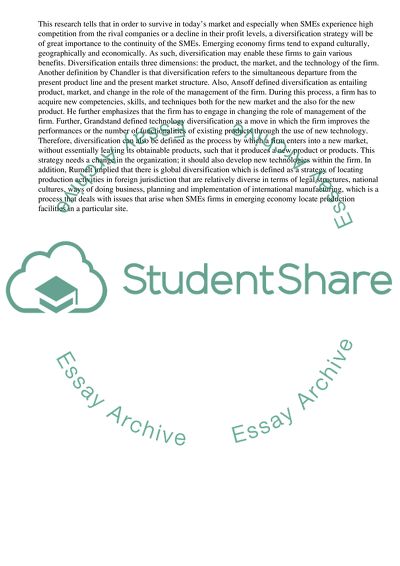Cite this document
(“Diversification Strategy Essay Example | Topics and Well Written Essays - 2000 words”, n.d.)
Diversification Strategy Essay Example | Topics and Well Written Essays - 2000 words. Retrieved from https://studentshare.org/management/1682799-critically-examine-the-argument-that-firms-in-emerging-economies-should-pursue-a-diversification-strategy
Diversification Strategy Essay Example | Topics and Well Written Essays - 2000 words. Retrieved from https://studentshare.org/management/1682799-critically-examine-the-argument-that-firms-in-emerging-economies-should-pursue-a-diversification-strategy
(Diversification Strategy Essay Example | Topics and Well Written Essays - 2000 Words)
Diversification Strategy Essay Example | Topics and Well Written Essays - 2000 Words. https://studentshare.org/management/1682799-critically-examine-the-argument-that-firms-in-emerging-economies-should-pursue-a-diversification-strategy.
Diversification Strategy Essay Example | Topics and Well Written Essays - 2000 Words. https://studentshare.org/management/1682799-critically-examine-the-argument-that-firms-in-emerging-economies-should-pursue-a-diversification-strategy.
“Diversification Strategy Essay Example | Topics and Well Written Essays - 2000 Words”, n.d. https://studentshare.org/management/1682799-critically-examine-the-argument-that-firms-in-emerging-economies-should-pursue-a-diversification-strategy.


